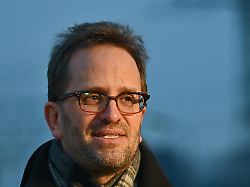Consumption drops by 38 percent
Germans save gas at the beginning of the year like they haven’t for a long time
01/12/2023 3:44 p.m
Good news from the Federal Network Agency: In the first week of January, Germans save more gas than they have since the measurement began. In a long-term comparison, consumption drops by 38 percent. Agency boss Müller is accordingly pleased. The reason is not only the mild temperatures.
The Federal Network Agency believes that the gas supply situation in Germany has continued to stabilize. The authority announced that consumption in the first calendar week was 38 percent below the average consumption for the years 2018 to 2021. This is the highest reduction since the published series of measurements began at the end of March 2022. Industry consumed 34 percent and households and businesses 42 percent less. Authority President Klaus Müller expressed his delight. In a tweet he wrote under the latest consumption data: “Thank you very much!”
The weather played an important role. “The temperatures were 5.1 degrees Celsius warmer than in previous years,” it said. Temperature-adjusted consumption also fell. In the 52nd and 1st calendar week, it was 25 percent below the reference value of the past four years. He is now back in the stable range.
“A gas shortage this winter is becoming increasingly unlikely,” said the agency. However, a worsening of the situation cannot be ruled out. “Frugal gas consumption remains important.” The gas storage facilities in Germany are well filled. Their filling level recently fell by 0.1 points to 91 percent, according to data from the European gas storage association GIE. It was the second straight day of a slight decline.
German gas level above EU average
Previously, levels had been rising every day since December 21, largely due to the mild weather. The largest German storage facility in Rehden, Lower Saxony, recently recorded a filling level of 90.4 percent. Across the EU, the filling level was 82.6 percent, a good 0.2 points lower than the previous day.
The storage facilities compensate for fluctuations in gas consumption and thus form a buffer system for the market. The filling levels usually decrease after the start of the heating period in autumn. On the morning of November 14, a fill level of 100 percent was recorded. On February 1, according to the Energy Industry Act, the storage tanks should still be 40 percent full.
Germany covers its gas needs, among other things, through pipeline imports – on Tuesday from Norway, the Netherlands, Belgium and France. Gas was also fed into the German grid at the new LNG terminal in Wilhelmshaven. According to the network agency, gas has also been fed into the LNG terminal in Lubmin since Monday.
